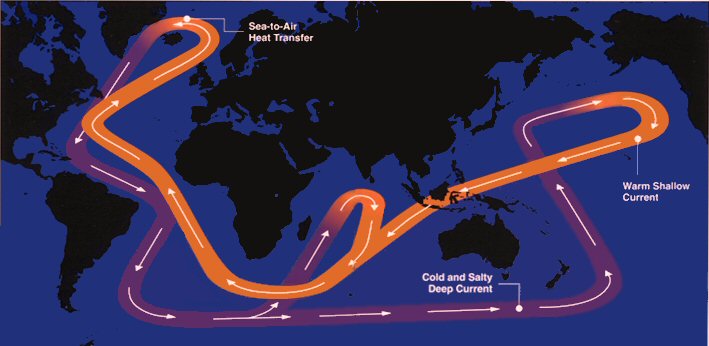
In contrast to the wind-driven circulation, the thermohaline circulation (the THC) is mainly vertical. It is driven by the formation and sinking of deep water in the Greenland-Iceland-Norwegian (GIN) Sea, and is probably responsible for the large flow of surface water past Indonesia, from the Pacific to the Indian Ocean.
This North Atlantic conveyor belt is controlled by two mechanisms that have opposite effects on the flow of water. Thermal forcing (differences in temperature due to high latitude cooling and low-latitude heating) drives flow northwards at the surface, and southwards at depth. Haline forcing (differences in salinity due to high-latitude freshwater gain and low-latitude evaporation) has the opposite effect. At present the thermal forcing dominates, so the flow runs from from south to north in the upper layer of the Atlantic. When excess precipitation, runoff, or ice melt strengthen the haline forcing, the conveyor belt may weaken or even shut down. Changes in the strength of the conveyor belt will lead to climate change in Europe and may also influence climate in other parts of the world.
In practice it is not possible to measure the Atlantic THC or separate this flow from that of the wind-driven circulation. This is why ocean scientists talk about monitoring the Atlantic Meridional Overturning Ciruclation (the MOC), which may be monitored by measuring flow at strategic points across the width of the Atlantic and using these measurements to calculate total northward and southward flow at different depths.